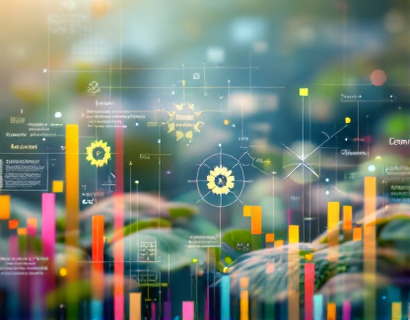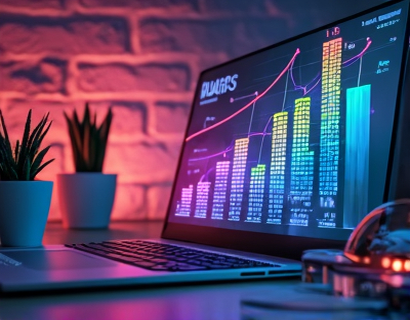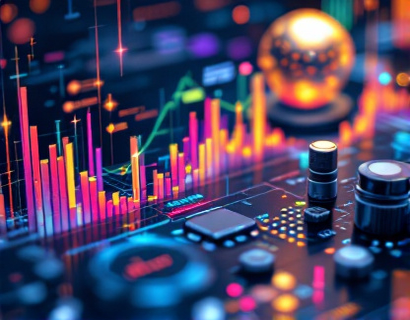AI and Crypto: Pioneering Next-Gen Productivity with Innovative Digital Solutions
The convergence of artificial intelligence (AI) and cryptocurrency is ushering in a transformative era for digital productivity. This synergy is not just a technological curiosity but a practical solution that empowers tech innovators and early adopters with advanced app solutions. These solutions are designed to streamline tasks, enhance efficiency, and redefine how we interact with digital tools. This article delves into the intricate ways AI and cryptocurrency are reshaping the digital landscape, offering insights into the potential and current applications that are setting new standards in productivity.
Understanding the Synergy: AI and Cryptocurrency
To grasp the full potential of AI and cryptocurrency in enhancing digital productivity, it's essential to understand the fundamental characteristics of both technologies. AI, with its ability to process vast amounts of data, learn from patterns, and make decisions with minimal human intervention, is revolutionizing how we approach complex problems. On the other hand, cryptocurrency, built on blockchain technology, provides a decentralized, secure, and transparent means of conducting transactions and storing value.
The integration of these two technologies creates a powerful combination. AI can leverage the security and transparency of blockchain to ensure data integrity and prevent fraud. Conversely, cryptocurrency can utilize AI to enhance its functionalities, such as improving transaction processing, enhancing security protocols, and developing smarter financial instruments. This mutual enhancement is what drives the next generation of digital productivity tools.
Enhanced Security and Trust
One of the most significant benefits of combining AI and cryptocurrency is the enhanced security and trust they offer. AI algorithms can detect and mitigate fraudulent activities in real-time, ensuring that transactions on the blockchain are secure and tamper-proof. Smart contracts, self-executing contracts with the terms directly written into code, benefit greatly from AI's ability to monitor and enforce contractual obligations automatically. This not only reduces the risk of human error but also builds trust among users who can verify the integrity of transactions through transparent and immutable records.
For businesses and individuals alike, this level of security is invaluable. It allows for seamless and confident execution of transactions without the need for intermediaries, reducing costs and increasing efficiency. In the context of digital productivity, this means that apps and services can operate with a higher degree of reliability, ensuring that critical tasks are completed accurately and securely.
Optimized Data Processing and Analysis
AI's strength lies in its ability to process and analyze vast datasets quickly and accurately. When integrated with cryptocurrency, this capability can be harnessed to optimize various aspects of digital productivity. For instance, AI can analyze transaction patterns on the blockchain to identify trends, predict market movements, and provide actionable insights. This data-driven approach enables users to make informed decisions, optimize resource allocation, and enhance overall productivity.
In the realm of smart contracts, AI can automate the execution of complex business processes by analyzing multiple data sources and ensuring that all conditions are met before triggering the contract. This automation not only speeds up the process but also reduces the potential for errors and disputes. For businesses, this means faster contract execution, reduced administrative overhead, and a more streamlined workflow.
Personalized User Experiences
AI-driven personalization is another key area where the integration of AI and cryptocurrency can significantly boost digital productivity. By leveraging blockchain's decentralized nature and AI's data analysis capabilities, apps can provide highly personalized experiences tailored to individual user preferences and behaviors. This level of customization enhances user engagement and satisfaction, leading to more efficient task completion and better overall performance.
For example, AI can analyze a user's interaction history, preferences, and past behavior to recommend the most relevant tools and services. In a cryptocurrency context, this could mean suggesting specific digital assets or investment opportunities based on the user's risk profile and investment goals. Such personalized recommendations not only save time but also help users make more informed decisions, further enhancing productivity.
Decentralized Applications (DApps)
Decentralized applications, or DApps, are a prime example of how AI and cryptocurrency are redefining digital productivity. DApps operate on a blockchain network, leveraging AI to provide advanced functionalities and user experiences. These applications are not controlled by a single entity, ensuring greater transparency, security, and resilience against censorship and downtime.
AI can enhance DApps by providing intelligent interfaces, predictive analytics, and automated task management. For instance, a DApp for project management can use AI to predict project timelines, allocate resources efficiently, and alert team members of potential bottlenecks. This level of automation and insight not only streamlines workflows but also empowers teams to focus on high-value tasks, thereby boosting productivity.
Smart Financial Instruments
The integration of AI and cryptocurrency has also led to the development of smart financial instruments, which are revolutionizing the way we handle financial transactions and investments. These instruments, such as decentralized finance (DeFi) protocols, use AI to optimize trading strategies, manage risk, and provide real-time market insights. The transparency and security of blockchain ensure that these financial instruments operate with the highest level of integrity.
For users, this means access to a wide range of financial services without the need for traditional financial intermediaries. AI-driven trading bots can execute trades based on complex algorithms, adapting to market conditions in real-time. This not only increases the potential for higher returns but also reduces the emotional and cognitive load on users, allowing them to focus on strategic decision-making rather than day-to-day trading.
Challenges and Considerations
While the integration of AI and cryptocurrency offers numerous benefits, it is not without its challenges. One of the primary concerns is the regulatory landscape. As these technologies continue to evolve, regulatory bodies are still grappling with how to oversee and govern them. This uncertainty can create barriers to adoption and implementation, particularly for businesses looking to integrate these solutions into their operations.
Another challenge is the technical complexity involved in developing and maintaining AI and blockchain-based systems. Ensuring interoperability, scalability, and security requires expertise and resources that not all organizations may possess. However, as the ecosystem matures, these challenges are likely to be addressed through standardization, better tools, and increased collaboration.
Future Prospects
The future of AI and cryptocurrency in enhancing digital productivity is bright. As technology continues to advance, we can expect even more innovative solutions that leverage the strengths of both fields. The development of more sophisticated AI models, combined with the growing adoption of blockchain, will lead to more intelligent, secure, and efficient digital tools.
One area of future growth is the integration of AI with other emerging technologies, such as the Internet of Things (IoT) and 5G networks. This convergence will enable more seamless and real-time data processing, further enhancing the capabilities of AI and cryptocurrency-driven applications. For instance, IoT devices can feed real-time data into AI algorithms, which can then make instant decisions through smart contracts on the blockchain, creating a highly automated and responsive system.
In conclusion, the integration of AI and cryptocurrency is not just a technological trend but a fundamental shift in how we approach digital productivity. By combining the power of AI's data analysis and automation with the security and transparency of cryptocurrency, we are witnessing the birth of a new era of app solutions that streamline tasks, boost efficiency, and redefine the digital experience. As tech innovators and early adopters, embracing these technologies will be key to staying ahead in the rapidly evolving digital landscape.











































